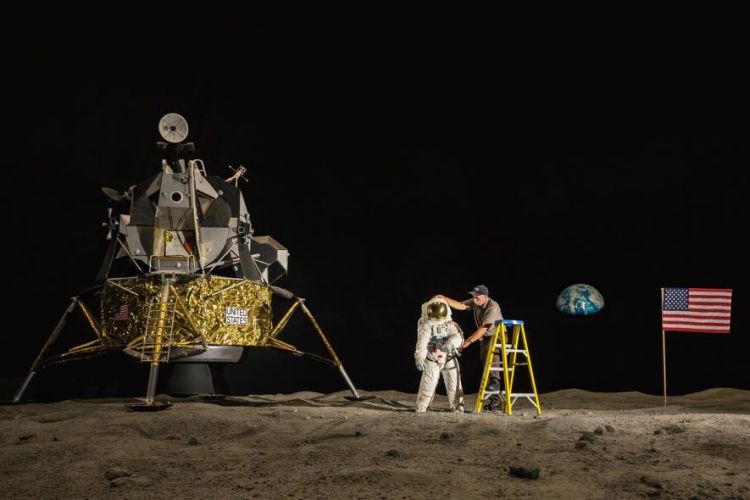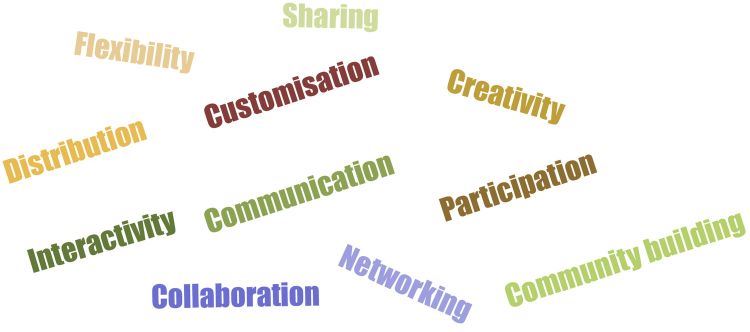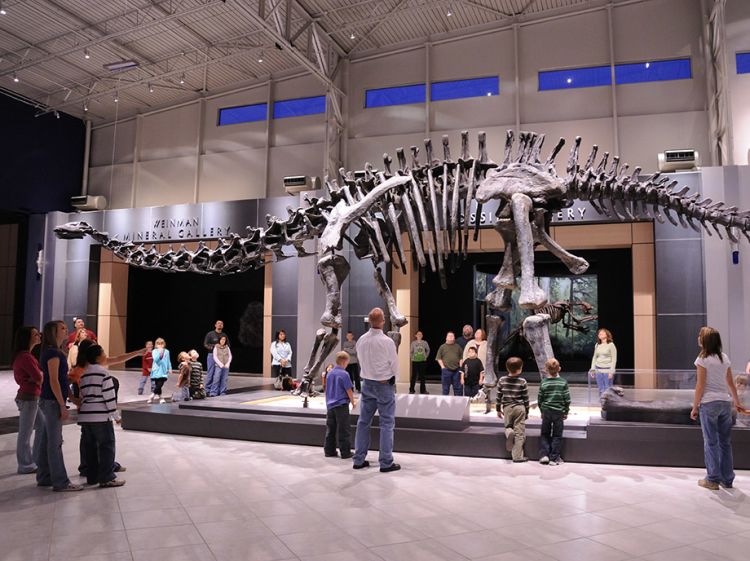Today and Future
of
Science Education
Science is changing our life, but how should we educate people about science?
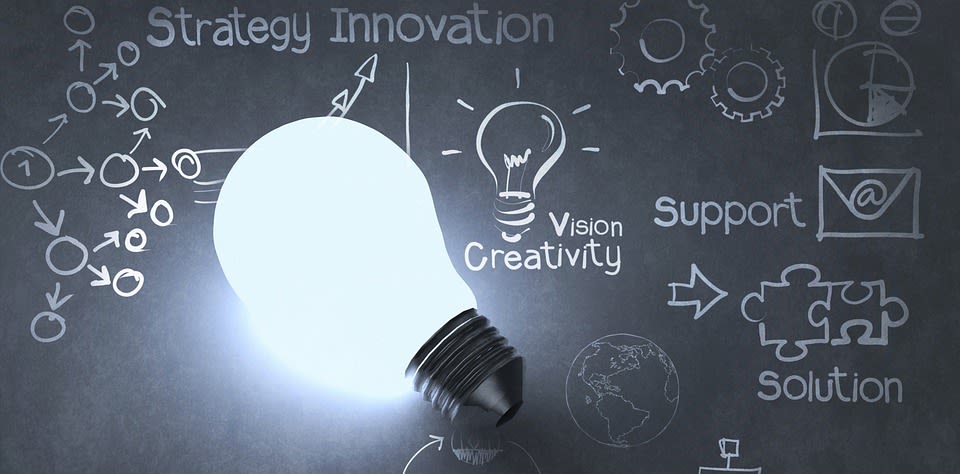
FOREWORD
by Alex Chen
“In the 21st century, scientific and technological innovations have become increasingly important as we face the benefits and challenges of both globalization and a knowledge-based economy. To succeed in this new information-based and highly technological society, students need to develop their capabilities in STEM to levels much beyond what was considered acceptable in the past.”
What is the definition of science education?
Actually, it varies according to the group you belong to. The learners could be children, college students, or adults within the general public. The contents embrace various science subjects, scientific experimental methods, scientific ways of thinking. Generally, science education could be divided into two parts: in school and beyond school, which both play a critical role to the future development of our country and society.
Why is school science education important?
After extended debates in history, the core of school science education is thought to be a combination of citizen science and pre-professional training. The goal of school science education is not only to teach students basic science knowledge but also to teach them how to think, learn, solve problems and make informed decisions with scientific methods, which are integral to every aspect of a student's education and life, from school to career. We need to be scientifically literate to succeed in this increasingly scientifically and technically advanced world.
Problem-solving and critical thinking are two integral components of school science education.
As the core of all scientific methods to solve problems, experimentation follows a similar course: Combine a scientific question with research to construct a hypothesis, conduct experiments to test that hypothesis, evaluate the results to draw conclusions and communicate those conclusions with others. The process of creating, executing, evaluating and communicating the results of a experiment could be unconsciously applied to any challenges the students face in their further academic career or everyday life, from proving a point in a persuasive essay to producing a photo in the darkroom. When problems arise, they know how to define the problem, generate effective alternatives, evaluate and implement the best solution.
Critical thinking requires independent exploration, comprehensive consideration, doubtful insight, in-depth observation and evidence-based judgement, which could be effectively cultivated through the whole school science education. If we master the ability of thinking critically and put it into practice, it will help us avoid herd instinct, breaking through "Group Thinking", prevent partisanship and provincialism from hindering our reasoning and finally make wise decisions.
Why is public science education important?
Whether you are Chinese or American, it is often the case that people think science is something to be tolerated in high schools and universities, details of which will be promptly forgotten after final exams. It is seemingly understandable considering that the basic science curriculum is inclined to consist of lectures on taxonomy or analogous facts on scientific discoveries along with the painful need to memorize numerous specialized words. But the notion that science is supposed to be left to scientists, and the very question of what is or is not science should be left to politicians is totally wrong and damaging.
With the accelerating pace of scientific research, the average citizens increasingly have to grapple with matters of science in everyday life. Many complicated and urgent public debates are actually questions of science. To equip the public with sufficient science knowledge is critical to promoting a democratic process for science-related policies and protecting their own self-interest. For example, the many causes and effects that impact human health are questions of science: smoking is a cause of lung cancer; obesity is a cause of diabetes; alcohol and drug use by pregnant women is a cause of brain damage to their unborn children.
In another dimension, making the public informed of science is necessary to strengthen the public's engagement in important policy debates and the development of science community on the long run. For example, the public own the rights to be informed of the significance of the science of embryonic stem cell research when scientists want to push a policy to fund and accelerate the development of this field, otherwise, the public's commitment to the funding given to the academic community is diminished, which may result in the decline of the government's science budget.
On a less weighty level, science is everywhere in society. Without scientific insight to distinguish science and non-science, most citizens are not equipped to personally assess the facts, nor to separate the facts from opinions or political spin. Consequently, they are likely to be predominantly influenced on these issues by confirmation bias or propaganda.
Science education creates critical thinkers, makes the public informed, increases science literacy, and enables the next generation of innovators. This is why science education matters.
Bibliography:
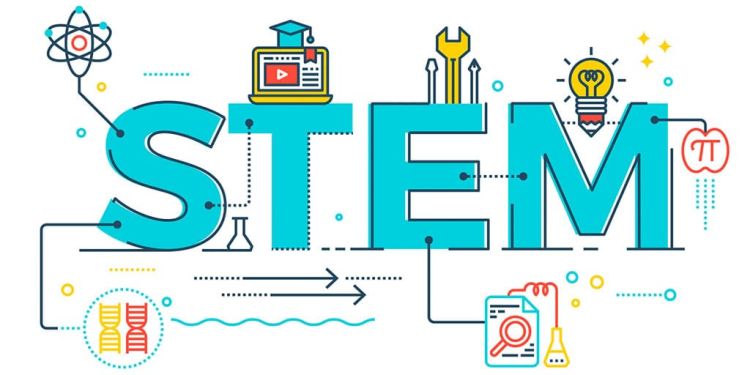
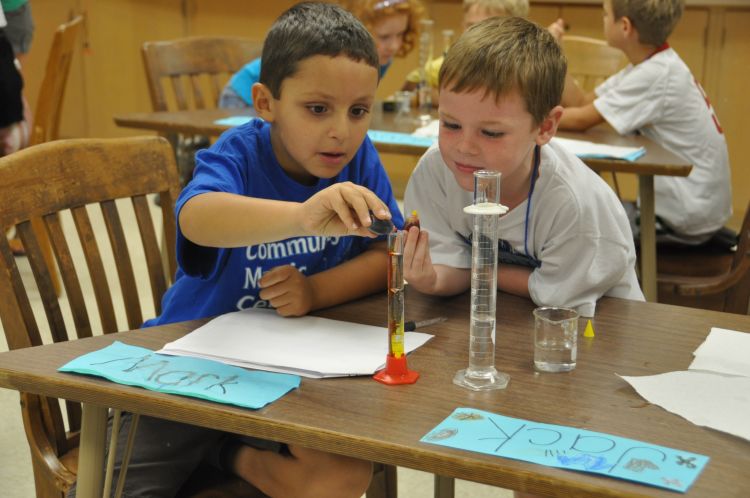
INTERVIEW:
HOW is the science education going on now in America and China?
Let us listen to our oral interview with Prof. Ann Marie Ross who teaches the Media Literacy class at University of Chinese Academy of Sciences (UCAS) in Beijing, China or view the transcript below.
X: the interviewer Simon Xia
R: the interviewee Prof. Ann Marie Ross
X: What do you think is the main purpose of modern science education? To give students a general concept of modern science or to inspire their interest in certain field? Or neither?
R: You know that is a really good question because education itself is a controversial area. Some people think education is for the person. To make people a better person, a better adult and a better worker. And other people think education of all kinds of science, is for the good of a higher goal, such as developing a country or making people able to be employed. That is what makes it hard to answer the question. But I think science education, unlike other fields, has some really tough time. The teachers of science have to stay on track for what is happening in this field, so they have to stay fresh because science changes rapidly. Unlike something else like math or language, you know, which is static and stays the same.
X: Do you think the government should give more financial support to science education to attract talents or higher quality? Or to purchase more educational equipment? Or something else?
R: You know, education is all about money and the more money you can put into education, the better opportunities you have. The one problem is that there are trends to put money in education that is supported by a certain group and often the money is not put to the best use. So money is not the only thing. Bill Gates put a lot of money into the new work-school system in New Jersey and it didn’t improve. So definitely there was something going on that is beyond money. I think that is a very important question. It’s not just about throwing more money into it and increasing budget by 20%. You need to have a good plan and you have to ensure the plan will work.
X: So, we need to change our strategy of science education now?
R: In China or everywhere? Where do you mean?
X: In your country.
R: In the US?
X: Yes.
R: Yeah. One of the big problems in our country is that the science teachers tend to be not the best of the bunch and that’s because the pay in teaching is far less than what you can make in private industry. There were some efforts to make science teachers and math teachers wealthier than other teachers, but that will utterly destroy the friendship within the school if you had science and math teachers making more money than everyone else. So, it is continually a problem.
X: Do you think the government should spend money on making a general and basic standard of science education and force all schools to observe it?
R: They do have that. They have something called the “common core”. And there is a document announced by national science academy of sciences in the US that lays out what science curriculum could do. One of the problems is there is just not enough time in the science field to present that all these complicated topics. So often the teacher will present what they are most familiar with and stumble to the rest and just tell students just to read it. It’s like continuing a problem because the students need to feel comfortable about science and if the teacher isn’t comfortable about science, then that begins a kind of bad trend where the students don’t want to pursue science of a higher level. You find people who are really keen on science tend to be the ones whose parents are involved in science and something about it. And that’s really tragic because teachers can inspire people to go into different fields. I really think probably the answer is for the high schools to have some kind of curriculum exchange with colleges and have the students be allowed to go in to a science laboratory where the kids can get really excited about what’s going on and get a better feel for where the jobs, where the careers and where the interesting stuff is in science because they just don’t know.
X: Could you generally and briefly talk about the scientific literacy of the substance in your country at present?
R: Oh it’s rather poor and it goes back to something that I’m always, you know, going on and on about is that students today feel they don’t need to read and because they don’t read, they don’t get a higher level of thinking which is what you need in science. They see pictures of artificial intelligence. They don’t understand what it is. It’s something you can’t just see from a picture or a video. They’re interested in it. It’s cool and if you show a picture of it, they will watch it, but it goes by. It goes by their eyes. It’s just a string pass them and if it’s the time to go and study, say, physics or chemistry, they don’t want to spend the time reading the textbook. And I really don’t know what is the answer to that because they are not able to sit still for very long in order to accumulate all that. It’s very different from China. In China, students will sit quietly and stays for hours. For whatever reasons American students are socialized not to be able to do that to such a great extent, it’s very tragic.
X: That’s all the questions. Thank you.
R: OK. You’re welcome.
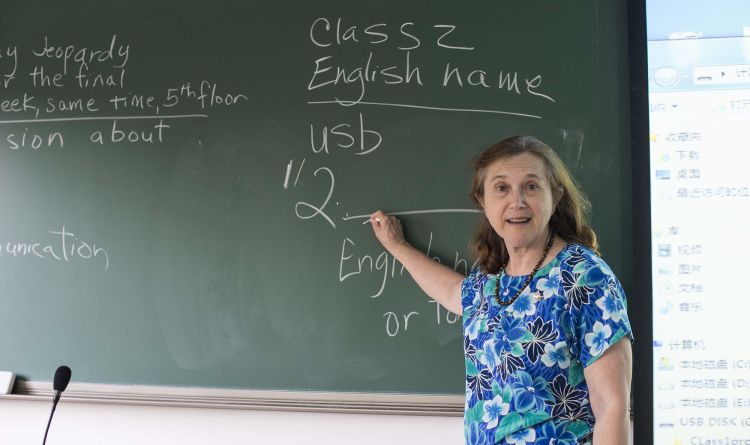
Policy & Strategy
This part will focus on current policies, strategies and structure of science education in U.S. and China
By Simon Xia

Since the understandings of Science Education largely differ in USA and China, the education strategies are different in two countries.
I. Different understandings of education equality lead to the most significant difference in strategies.
Although the policy makers both pay attention to educational equality, Chinese emphasize more on practical plans while American focus on ideal situation with unlimited resources.
Aimed at managing the largest science education system in the world, Chinese educators attach much importance to the universality of science education strategies. The fundamental purpose of this system is to promote students' comprehensive development in all subjects ranging from physics to biology. Therefore, the official standard of science education covers various kinds of knowledge and is adjusted according to the requirements of different districts. However, this standard is usually rigidly observed by schools and teachers nearly without any consideration of individual differences due to the pressure of standardization examination. These strategies contribute to rapid improvement of average civilian science literacy at the cost of severe damage to students' problem-solving ability and potential interest in certain specific field.
However, the foothold of America educators is different and it is universally accepted that students with different characteristics, experiences or levels of intelligence should be educated with different patterns and deserve different resources, which is the basis of educational equality. Also, individual interest in certain fields is usually inspired and will receive various resources. This system contributes to students' innovation ability but consumes considerable educational resources. The students whose schools lack enough resources, especially in districts where gap of wealth is obvious, have low possibility to enjoy high-quality science education.
II. The contents of education are based on different frames and lead to two kinds of teaching structures.
Educators in two countries both aim at the integration of different subjects because the solution of practical problems usually need knowledge of several subjects. But due to different national conditions, different strategies are adopted.
To ensure the comprehensive mastery of knowledge of different subjects, Chinese teaching structure works under the guidance of knowledge hierarchy. Connections between numbers of knowledge points are gradually built along the frames of knowledge hierarchy, which will also develop students' potential in logical thinking. This structure enables the combination of efficiency and practicality but hinders the integration of different knowledge hierarchies.
With the purpose of improving teaching quality based on a relatively smaller teaching plan, the core concept is the keystone of the American teaching structure. Since core concepts can be related to most important knowledge points of different subjects, the integration of different subjects is much more practical under this structure. However, due to the less emphasis on knowledge hierarchy, the mastery of specific knowledge points is challenged.
III. Different teaching structures and understandings of science literacy result in different teaching emphases.
The improvement of science literacy is the common goals of educators and the understanding of research process plays an important role, which lead to divergence in teaching programs.
Chinese educators focus on the logic of science and prefer logical and theoretical research in teaching practice. In Chinese classroom, logical demonstration and theoretical derivation are much more common than research with experiments. Apart from reasons above, the lack of experimental equipment is also responsible for the inclination. The mode strengthens students' logical thinking but weakens their problem-solving ability in practical engineering application.
On the contrary to Chinese educators, American educators think that the combination of knowledge and practice plays a more important role, thus encouraging research with experiments. With the emphasis in practical problem-solving ability, logical thinking is ignored more or less.
IV. The differences in ideology result in differences in the ultimate goals of science education.
Chinese science education aims at boosting social development, which is inspired by the Marxist idea that education should be connected to production practice. However, with the purpose of serving individual career, American science education focuses more on individual improvement, whether in skill development or academic values.
Bibliography:
- Federal science, technology,engineering, and mathematics (STEM) education 5-year strategic plan, National Science and Technology Council
- http://www.ed.gov
- http://www.moe.gov.cn
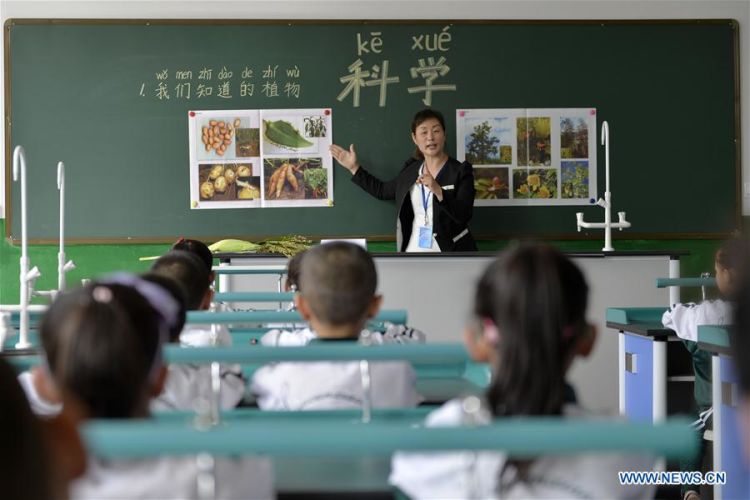
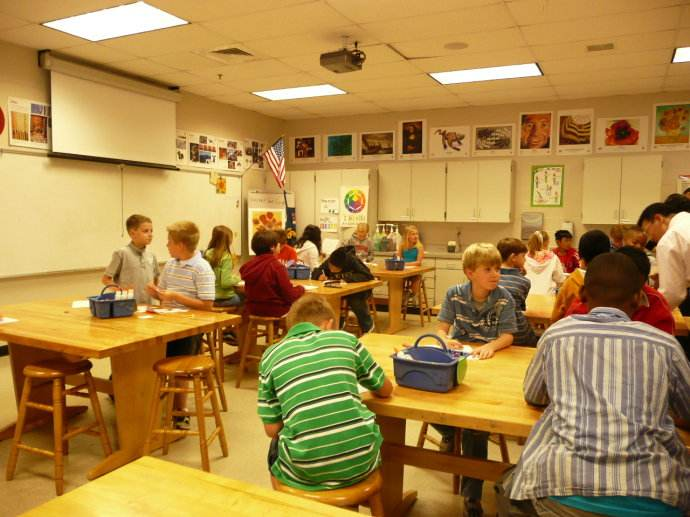
Challenge & Solution
This part will focus on current challenges of science education. Facts and statistics together with some possible reasons and solutions will be included.
Draft by Ted Bao, revised by Alex Chen





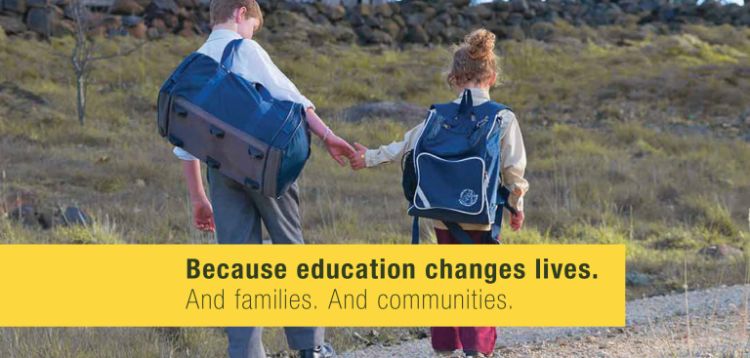
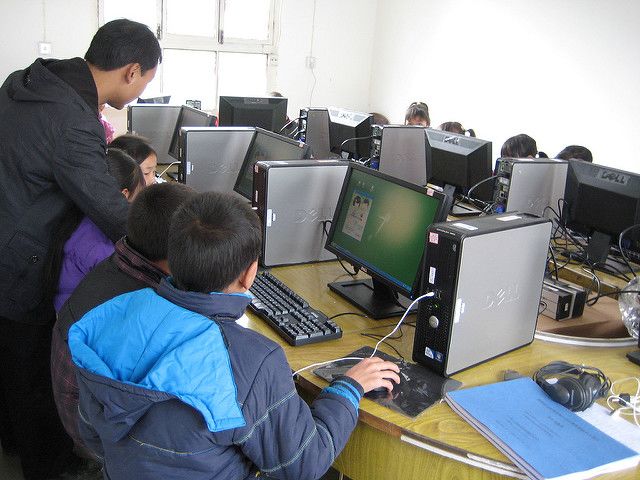
Challenge I: Disparity between Developed and Underdeveloped, Public and Private
By Ted Bao
Foreword
In China, owing to the serious economic disparity between cities and rural areas, some key schools in cities own far more resources than the rural schools. In the U.S., the students of private schools are much more likely to enjoy high quality education than their peers in average public schools. Accordingly, science education, an integral part of the whole education system, is tremendously affected by the inequality of education.
Facts And Statistics
Private vs Public
As is implicitly demonstrated in the infographic and the video, when we compare private schools with public schools in the U.S., students in private schools are more likely than their public school peers to earn a bachelor’s or advanced degree. Higher education is often made possible by a rigorous college preparatory curriculum, like that found in top private schools.
A private school education has more advantages over a public school education, including lower student to teacher ratios, stricter disciplines in the classroom, higher standards for graduation, and a commitment from both teachers and students to maintain high-quality education.
Developed vs Underdeveloped
The following chart shows the education cost per student in each province in China (2013) (sources: EDUCATIONAL STATISTICS YEARBOOK OF CHINA 2013). In the chart, red means the cost in primary school, blue the middle school and the green stands for high school. The unit is yuan(RMB).
From the data above, we can easily conclude that the education cost in different province varies. Because of the reform and opening-up policy, the east areas of China tend to be more wealthy than other areas. This is also reflected in chart. Students in eastern areas like Beijing, Shanghai, Zhejiang enjoy a high level of cost in education, while the education cost in other areas like in Henan or Hubei is lower than the average. Considering the resources disparity among schools, this sort of education inequality may be more significant.
The two charts provide more evidence for the education unbalance phenomenon in China. Higher education cost to some extent helps establish a more abundant education material supply, which allows students to acquire knowledge and skills with traditional media (like books) and multi-media equipment (like computers). Apparently, students in east areas like Beijing, Shanghai, Zhejiang enjoys much higher quality education than their peers in economically undeveloped provinces.
Additionally, the amount of teachers in developed areas is larger than in rural areas. For instance, according to EDUCATIONAL STATISTICS YEARBOOK OF CHINA 2013, The ratio of students to teachers in Beijing’s high school is 9.00:1, while in Henan the ratio increases to 17.51, which means in these areas like Henan, a teacher is more likely to spend less time on each student on average than teachers in Beijing.
Combining manpower resources (like teachers), financial resources and material resources, we can regretefully conclude that the challenge of resources differences among areas is significant and worth attention.
Possible Consequences
In China, young people living in underdeveloped areas rarely have chance of enjoying high-quality education in high school, especially in the science aspects, which leads to less possibility to enter top universities and eventually increasingly widening gap between developed and underdeveloped areas. Considering that the disparity in different areas made the government hard to set a fair enough criteria for testing students, the traditional score-oriented exam (also named Gaokao) is the only path to universities at present. In order to compete with their peers in key schools, rural students have to study much harder and stay up very late until Gaokao though, regretfully, their chance of entering top universities remains to be relatively rare due to the fierceness of competition of the university-entry exam, which reflects the scarcity of high-quality college education in some provinces of China from another perspective (Below is the acceptance rate of top universities in each province).
data source: http://www.neea.edu.cn/
Besides China, young people in rural and regional Australia also face huge obstacles getting into higher education and jobs, compared to city kids. Only 17% of rural youth go on to higher education, compared to 26% of city students. They also experience higher rates of unemployment, mental illness and suicide. It is even not a option for them when they want to leave home to pursue education and jobs in cities for the cost of up to $25,000 per year for travel and accommodation, resulting the predicament of a family and community.
Possible Reasons and Solutions
Superior education in some provinces of China is owing to the locations of these areas and special policies they enjoy. These areas are normally convenient for communication with other countries. It attracted trading and factories to move in, which greatly benefits local economy, together with the hard-working people, finally leading to their rapid development in recent decades. In the meantime, the reform and opening-up policy for these area offered them permission and even encouraged them to develop the economy in this way. Their prosperity enables them to possess more manpower resources (like teachers), financial resources and education equipment resources.
In the sociology of science, "Matthew effect" was a term coined by Robert K. Merton to describe how, among other things, eminent scientists will often get more credit than a comparatively unknown researcher, even if their work is similar; it also means that the credit will usually be given to researchers who are already famous. Similarly, if these areas have already possessed such superior resources, they are inclined to attract more intellectual or high quality resources. This kind of loop causes insufficient education resources flowing to underdeveloped areas, eventually forming the gap between developed areas and underdeveloped areas today.
Many countries offers their effective ways to solve this problem, the core of which is more investment and assistance from the government and society. One typical way is like REAP (Rural Education Achievement Program) in the US. REAP includes two programs. One is a mall program called Rural School Achievement (SRSA) and a bigger on named Rural and Low-Income School (RLIS). SRSA focuses on offering additional funding and opportunities to small and isolated districts. RLIS provides substantial additional funding to extremely poor areas. According to the research conducted by Schmidt, the majority of both district and state REAP coordinators were highly satisfied with REAP as a whole. Another feasible method from Australia is that foundations like The Country Education Foundation provide necessary help for disadvantaged rural and regional kids to get a head start in life through education.
Bibliography:
- ourkids.net "Private schools vs. public schools"
- China's ministry of education . (2013). Educational Statistics Yearbook Of China 2013 (2013).
- Merton, R. K. (1968). The Matthew effect in science: The reward and communication systems of science are considered. Science, 159(3810), 56-63.
- Schmidt, R. A., Caspary, K., & Jonas, D. (2016). Study of Experiences and Needs of Rural Education Achievement Program Grantees. Office of Planning, Evaluation and Policy Development, US Department of Education.
Challenge II: Gender Issue
LISTEN TO PIONEER:
What can we do to eliminate the gender bias in STEM and encourage more girls to love science? Let us hear the stories of the pioneer Debbie Sterling.
Debbie Sterling is an engineer and founder of GoldieBlox, a toy company out to inspire the next generation of female engineers. She has made it her mission in life to tackle the gender gap in science, technology, engineering and math.
Click Here view her powerful TED speech.
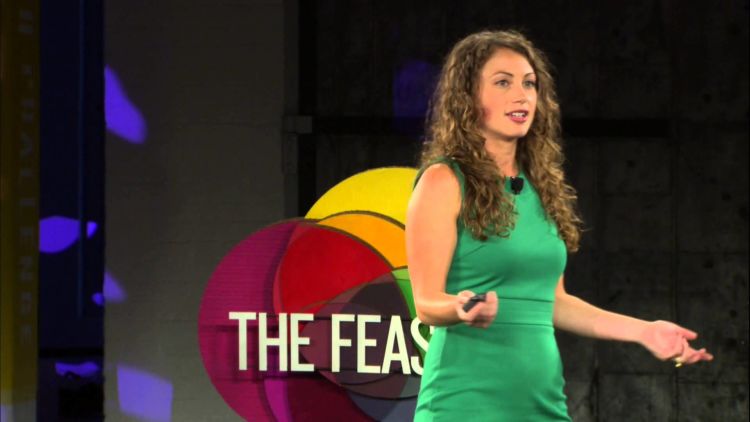
OBSERVER: Bridging Gender Gap in STEM
By Alex Chen and Ted Bao
Why Men Still Dominate the Science Field Today?
If you check the Nobel Price in science field, you will be able to notice that Nobel Price winners are still mainly men; if you walk in an university with science in its name, you will probably notice that most students are boys. From the top level of science to science colleges, the science field is seemingly still dominated by men. With more people agreeing with the equality of men and women, why men still dominate the science field today?
Apart from the burden to take care of children, the invisible discrimination in workplaces and barriers in the course of promotion, a more straight reason is much fewer girls choose STEM as their career. More deeply, social stereotypes and parental influence are two vital factors that block many young girls from STEM fields. Actually the stereotype that girls are less competent than boys has negative influence when girls are pretty young. According to the research conducted by Lin Brian, even six-year-old girls is less likely than boys to believe that they are "really, really smart", which leads to their large possibility to avoid the activities thought to be for smart ones (Lin Brian, 2017).
The parenting style also has a subtle and far-reaching impact on children's inclination on STEM. Girls as young as seven have been shown to underperform on math tests when their gender is made salient, which could be attributed to children being socialized differently regarding mathematics based on their gender. Boys tend to receive more encouragement in math from parents and teachers. Additionally, when visiting an interactive exhibit at a science museum, parents are found explain scientific concepts three times more than girls. Gender-specific toys also contribute to the parental influence (Breakwell, 2016). More exposure to STEM-related concepts and more encouragement might lead to differences in interest and confidence towards science and engineering, which could in turn influence girls to turn away from STEM fields early on in their schooling, perpetuating the cycle that has led to the paucity of females in STEM majors and careers.
How to promote gender equity and diversity in Science Education?
In order to counter stereotypes and mitigate implicit biases that have historically prevented the full participation of certain groups of individuals, how STEM is messaged to youth and their family must be changed.
One effective solution may be that popular media and other outlets, including apps and games, digital media, and social media outlets like YouTube and Twitter, have to change their traditional portrayals of who does science, what the "doing of science" entails, and who excels in these fields. Although the animated film audience are more diverse, films in 2014 that included underrepresented characters engaged in STEM activities or professions remain limited, which is disappointing because the young children are forming their understanding of their role and place in the society based on what they see and the animation could leave a biased impression on their mind. What is more worrying is that many female characters only function as eye candy in mass media, which only would strengthen the perception that females are excluded from STEM talent.
data source: Inequality in 700 Popular Films: Examining Portrayals of Gender, Race, & LGBT Status from 2007 to 2014
Because mass media platforms have a deep influence on the young people group, they possess the power and responsibility to reshape and develop kids' beliefs about how they could understand and shape the world through STEM disciplines. It needs the efforts of researchers, learning scientists, and media makers to create stories that enable all youth and communities to visualize an equal and colorful future in STEM, inspire them to create the future in the real world and facilitate the pathways for doing so.
Many promising efforts are already devoted to breaking down the stereotypes and promoting the inclusion of more diverse and compelling STEM images, stories, and positive messages in the entertainment industry and toy retail. The Disney team of creators for the animated film Miles From Tomorrowland partnered with technology and science experts from Google and NASA to help authentically portray the key characters, many of whom were women and girls. Science and Entertainment Exchange (The Exchange) program of The National Academy of Sciences provides entertainment industry professionals with quick and easy access to experts from all the scientific disciplines. The Exchange has promoted nearly 1000 such partnerships in the development of Big Hero 6, The Amazing Spiderman, The Big Bang Theory.
source: An episode of cartoon "Doc McStuffins."
But breaking down stereotypes is not enough. To break the invisible barriers in science, we need to encourage more girls to step forward to embrace the science world, overcome challenges, and compete with boys. We should promote more neutral parenting style rather than gender-specific one to simulate children's own potential.
“Own your ambitions. It really scares me the way young women dial back their aspirations because they’re anticipating that they’ll have to make compromises – believe me, the young men aren’t doing that.”
Bibliography:
- Bian, L., Leslie, S. J., & Cimpian, A. (2017). Gender stereotypes about intellectual ability emerge early and influence children’s interests. Science, 355(6323), 389-391.
- Breakwell, G. M., & Beardsell, S. (2016). Gender, parental and peer influences upon science attitudes and activities. Public Understanding of Science.
- "STEM 2026: A Vision for Innovation in STEM Education" FROM innovation.ed.gov
- "Inequality in 700 Popular Films: Examining Portrayals of Gender, Race, & LGBT Status from 2007 to 2014" By Dr. Stacy L. Smith, Marc Choueiti, Dr. Katherine Pieper FROM annenberg.usc.edu
- "Bridging the Gender Gap: Encouraging Girls in STEM Starts at Home" By Alicia Chang FROM huffingtonpost.com
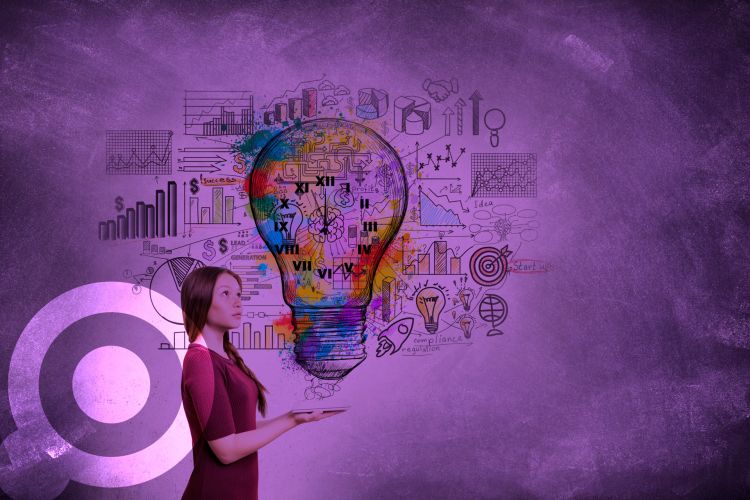
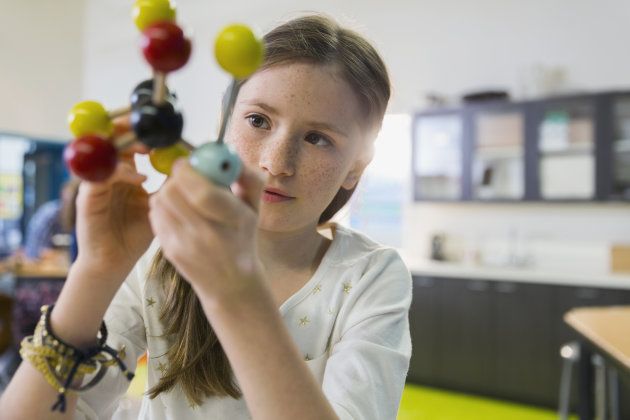
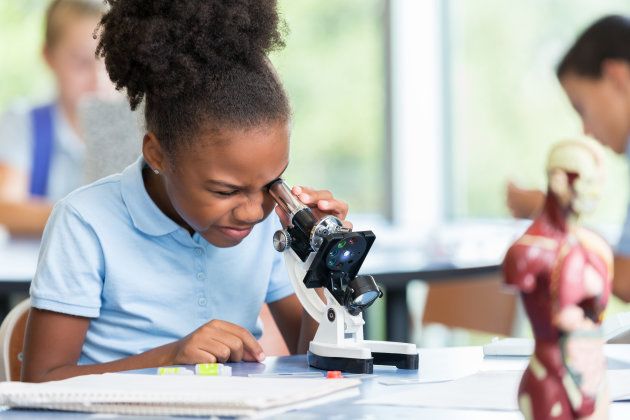
Challenge III: Raising Cost of Education
Rising cost of education is gradually becoming a worldwide problem. The price to enjoy higher level of education or even basic education is not affordable for some families. Let’s hear about the voice from “wemedia”:
“Private schools charge monthly fees ranging from 500 to 10,000 rupees per month (almost $5 to $100). Examination fees, costly books and VERY costly uniform is another way of earning for these private schools. However, the education standard provided by private schools is way better than state run schools.” @Hadi Bharara on Quora
“Apart from the tuition fees, there are various other latent "tertiary" costs associated with school education, the burden of which is borne solely by the parents, right from the day their child enters school. Thus, it becomes inevitable for parents to plan well in advance to meet these costs.” @Hamza Afzal Butt on Quora
“Good kindergarten cost much and the teachers there teach skills and follows kids interest. Bad kindergarten cost less but kids staying there can’t get anything. ” @Wangmou on Zhihu
"If you look at the long-term trend, [college tuition] has been rising almost six percent above the rate of inflation," @Ray Franke, a professor of education at the University of Massachusetts, Boston. "That's brought immense pressure from the media and general public, asking whether college is still worth it."
data source: CNBC.com "Why does a college degree cost so much?" By John W. Schoen
Bibliography:
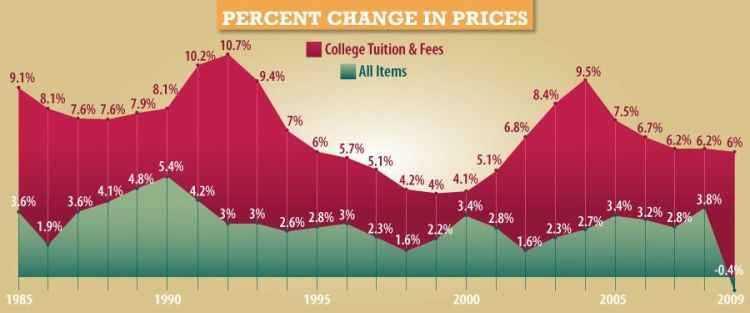
Imagine Future Science Education
By Alex Chen
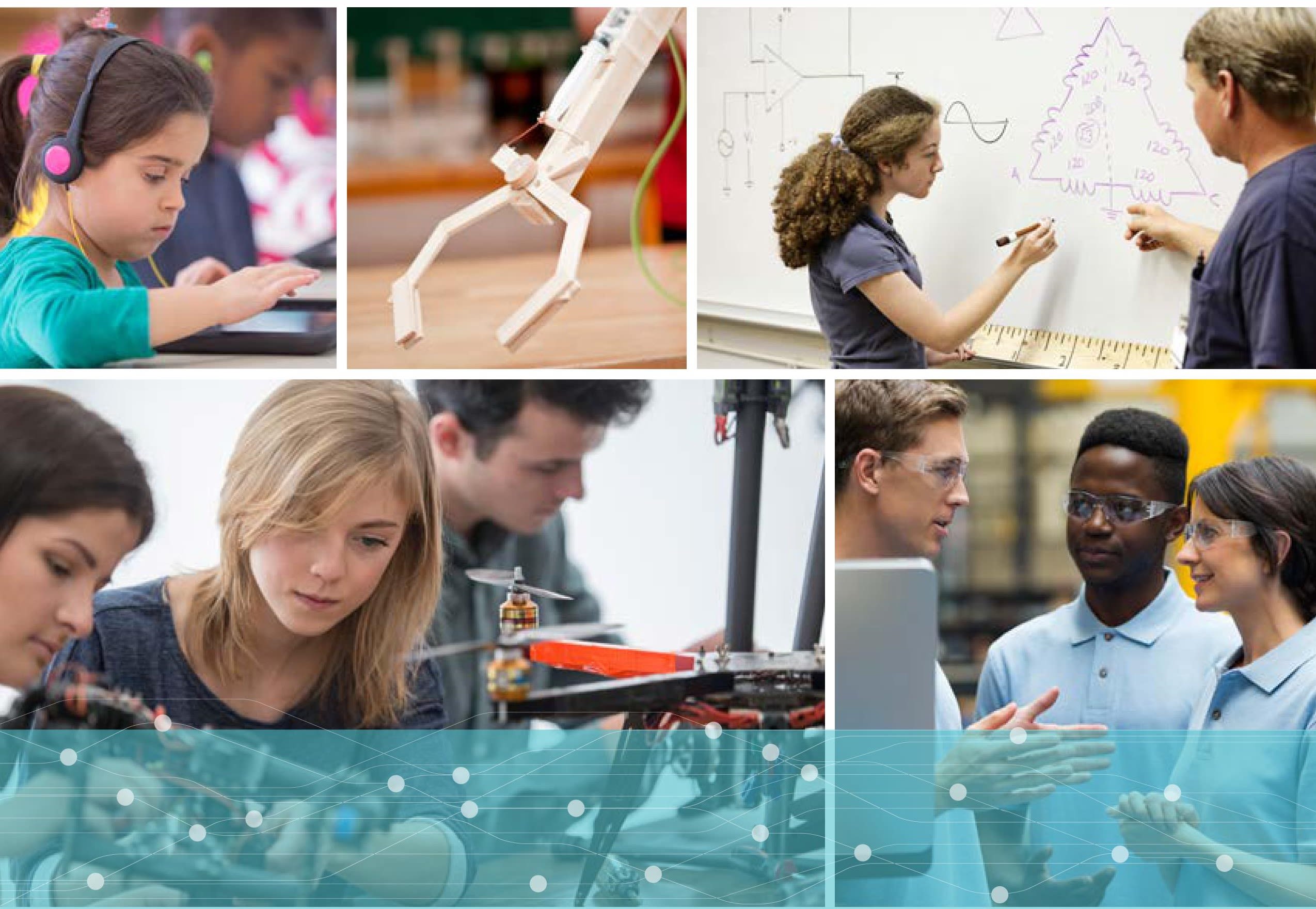
VISION: What will future science education be like?
Science education is not only about extensive memorization of facts and principles. According to the Academies' Ready, Set, Science!, the goals of a good science education are "to prepare students to know, use, and interpret scientific explanations of the natural world; to prepare students to generate and evaluate scientific evidence and explanations; to understand the nature and development of scientific knowledge; and to participate productively in scientific practices and discourse", which are critical not only to future researchers but also the public. Although it is a pity that current science education often only puts the emphasis on the first point to help students acquire higher marks, it is more important for students to experience the scientific method so as to learn how to distinguish data from speculation, how to frame a question, and how to approach a problem skeptically and critically.
What is our vision about future STEM education? I think the quote below sums it up very accurately:
"In STEM 2026, all members of the community feel invested and empowered to engage in STEM teaching and learning. STEM is not perceived as being thrust upon them or outside their purview but as culturally appealing and relevant. The language and concepts of STEM are accessible to all, and there is a shared understanding of where STEM fits into all people’s lives, regardless of race or ethnicity, disability, language spoken, gender, neighborhood, or geographic location. The components of the vision and the propagation of innovative practices effectively connect STEM to the broader portfolios of people’s interests and their everyday lives. The result is intergenerational learning that empowers learners of all ages to draw on the skills and capacities they have gained as they actively contribute to bettering their own and others’ lives."
Bibliography:
- "STEM 2026: A Vision for Innovation in STEM Education" FROM innovation.ed.gov
- " Considering Science Education" By Bruce Alberts, etc.
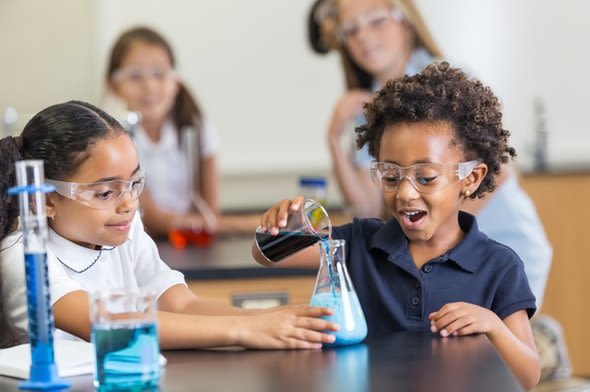
SURVEY of STUDENTS' OPINION: What Can Parents and Schools Do to Help Kids and Teens Become Interested in STEM?
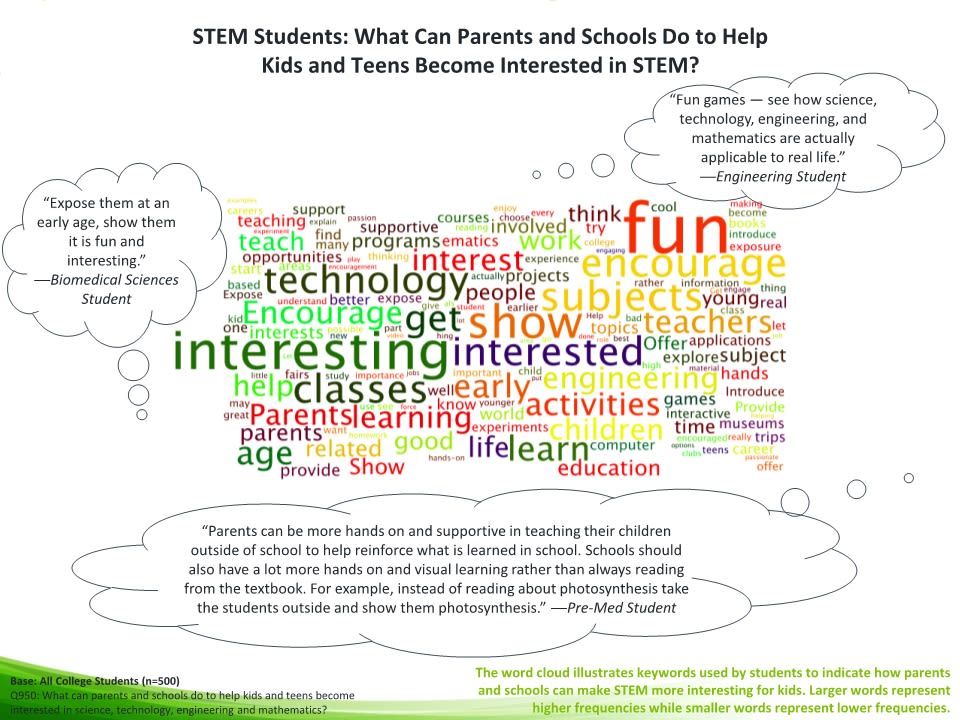
More Freedom, More Practice and More Fun
I imagine the future science education can be divided into inside-classroom class and outside-classroom class, which should consist of more freedom, more practice, more fun. Then students will not be framed in the test-oriented system and can free their imagination about the science world.
inside-classroom class
Inside the classroom, students are required to master the core knowledge and motivated to deepen their understanding of the specific concepts in order to solve a problem that is meaningful to them. Students will get a better understanding of the concepts when there is a need for their use because it will motivate them to apply what they’re learning to relevant and specific situations.
Project-based learning could be an effective educational mode for science learning in classroom and follows the eight steps:
- Define the problem
- Identify constraints
- Brainstorm multiple solutions
- Select the most promising solution
- Prototype the chosen solution
- Test and evaluate the prototype
- Iterate to improve the prototype
- Communicate the solution
Project-based learning mode helps students move from asking "what" to asking "why" and "how". Students focus on memorizing facts to pass a test in traditional science education, while project-based learning encourages scientific inquiries and puts students in the shoes of scientists to apply authentic reasoning practices like experimentation and trial and error at class. Apart from the facts, students learn how to apply these facts to help design open-ended projects.
Instead of the traditional "scope and sequence" approach in which students progress along a fixed path of concepts and skills, the new mode pushes kids to take an experience, get immersed in it and deepen their understanding through articles, conversation, discussion and exploration.
Allen-Sanchez’s science classes provides a good example of Project-based learning mode. Students are asked to work with a local restaurant to solve a real-life engineering challenge like designing a energy-efficient kitchen. In various practical situations like managing projects, communicating wth clients, going through the design cycle of prototyping, testing, evaluating, and revising solutions, they are motivated to learn STEM concepts such as the impact that doorways and windows have on thermal insulation.
outside-classroom class
Future science education is expected to extend to activities outsides the classroom or laboratory and embrace more practical and hands-on experience.
Stratford Grils School provides a models for us. Every year the students have the opportunity to spend a day in the National Space Center, working as a team and becoming mission controllers and astronauts. They are presented with tasks and realistic dilemmas that build problem solving, critical thinking and communication skills.
In addition, students could join in a series of biological and conservation management activities that operate in remote locations across the world. For example, in Madagascar, teens spent the first week at terrestrial sites taking part in lemur surveys, small mammal trapping in pitfall traps, days and night herpetology walks recording snake and chameleon species, which are what cannot be taught in class.
Bibliography:
- edutopia.org "Boosting Student Engagement Through Project-Based Learning" By Youki Terada
- edutopia.org "Guiding Students to Science Literacy" By Jayne Lecky
- www.sggs.org.uk "SCIENCE, ENGINEERING AND GEOLOGY"
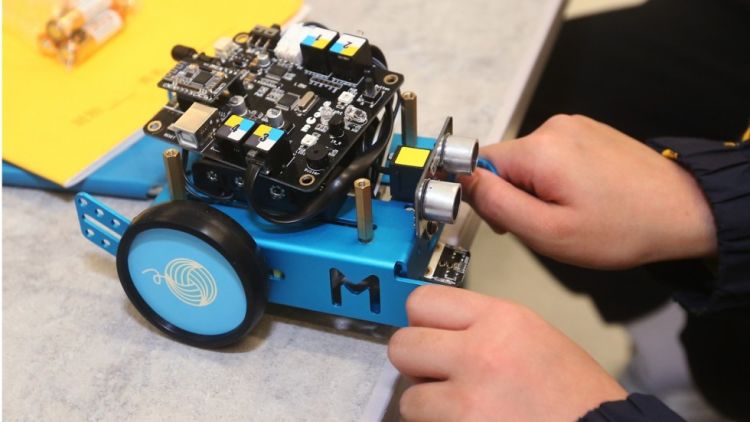
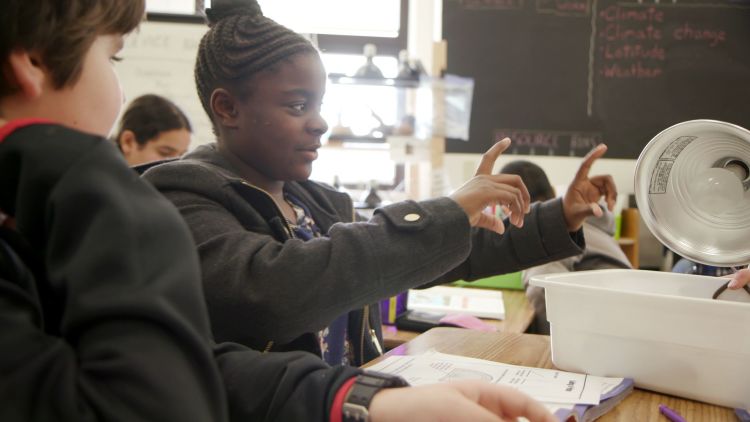
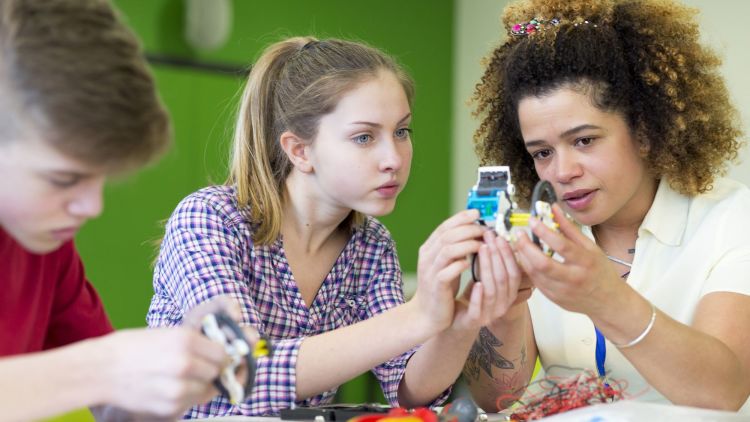
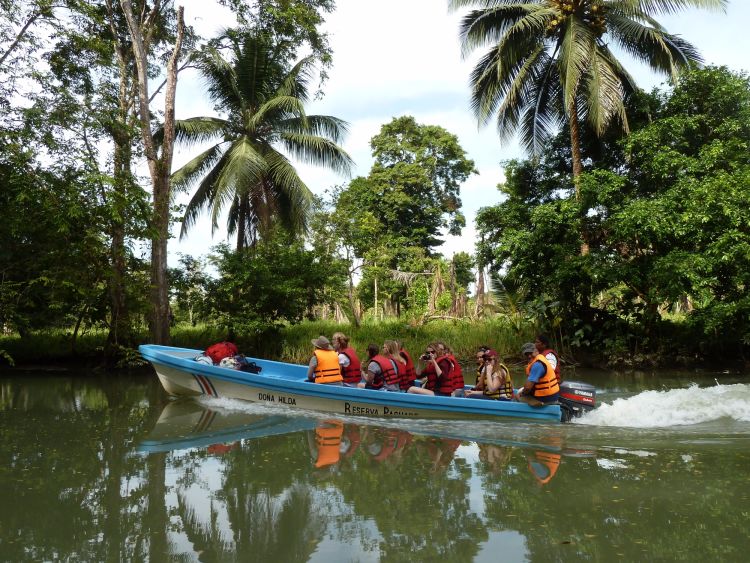
More Technology, More Innovation
What does technology mean to science education? Technology is the Means, Not the Mission.
Generally, we could see the future science education is more integrated with advanced technology to create more engaging class and inspire more innovation. Let us see how tech will transform future education (the infographic below).
How could technology help STEM education and inspire innovation?
Now, technology advancements like flipped classroom have expanded students' access to authentic and interdisciplinary STEM learning experiences. Research has indicated that incorporating into class the technologies like simulation-based games, mobile devices, and virtual environments can facilitate student-centered instruction and support students' retention of information, engagement, skill training, and learning outcomes (Chen, Metcalf, & Tutwiler, 2014).
What about future? Some promising technologies to which policymakers, researchers, educators can turn into crafting the future of STEM education includes:
• Online collaboration tools
• Online and hybrid educational environments
• Immersive media
• Games and simulations
• Intelligent tutoring systems15
• Augmented and virtual reality
Tools like these will help establish a learning ecosystem that enables deeper learning in STEM. They can bring the world into the classroom and the classroom to the outside world. Through interactive digital infrastructure, these tools also can promote creative problem solving among students; differentiate curriculum content ad align diagnostic assessments; and support classroom monitoring and management.
Let us take Intelligent tutoring systems for example, which refer to computer systems that aim to provide immediate and personalized feedback to the learner, simulating a human tutor's behavior and guidance. What makes them distinguished from most computer-aided instrumental tools on the market is that they are designed to interpret complex student responses and learn as they operate. They could alter their behavior in real time to interact more effectively with a student.With the frequent interactions with students, the tutoring systems can build individual student profiles, which are used to estimate overall level of mastery and diagnose the root of errors.
Why Intelligent tutoring systems could play a key role in future STEM education is that they support the type of self-directed, flexible, and inclusive learning environment that gives kids more freedom to learn what they are interested in and necessary assistance when they explore the unknown world.
Bibliography:
- "STEM 2026: A Vision for Innovation in STEM Education" FROM innovation.ed.gov
- "Shifts in Student Motivation during Usage of a MultiUser Virtual Environment for Ecosystem Science " By Shari Metcalf etc. Published on International Journal of Virtual and Personal Learning Environments FROM pdfs.semanticscholar.org
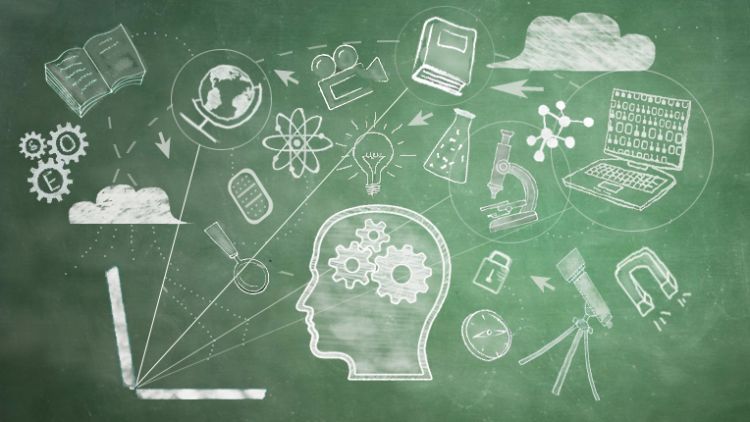
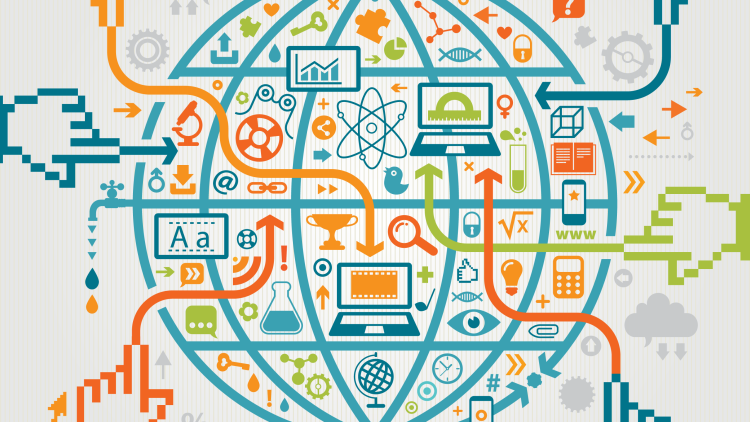
More Investment, and More Equality
Why equity in science education is imperative?
Maybe in the eyes of some people, science education has been structured as a pipeline, designed to filter out the majority of students and channel those perceived as most proficient into advanced classes, university programs and careers, but science education is not only for an elite few. Increasing public policy decisions, from genetic engineering to medical research priorities to the protection of habitats, depend on a knowledgeable electorate. The future work force will require skills and understandings of basic theory principles. Finally, equity is a moral as well as a public policy and economic issue. Science is culturally valuable components of knowledge which ought to be available to all, whether you are privileged or not.
How can the nation effectively provides all students around the country greater equity of access to high-quality STEM learning experiences? Only money is not enough.
Surely money is of significance for STEM education in impoverished areas. Equity is impossible when rural schools are constantly inequitably funded. Teacher turnover in highly rural schools will remain high if the average salaries remain disproportionately low. In order to overcome the long-standing hurdles, we need to gather the efforts of the local community, the government, the legislators, and other partners.
The National Science Foundation's (NSF's) Rural Systemic Initiative (RSI) serves as a model on how to address and ameliorate recognized inadequacies in STEM education in the most rural and historical impoverished regions of the United States. RSI takes it into consideration that only an influx of money and classroom resources cannot solve the socioeconomic complexities of educational inequity in highly rural areas like Alaska or rural Hawaii.
Overall, the program constructed sustainable local networks of learning by aligning the unique values, strengths, and cultures of the local community with the values of the education system. RSI funded a series of projects which combined the efforts of the local leadership and schools to help establish community-wide, cross-sector partnerships that addressed the root of poor STEM education in local environment, which led to improved standardization test scores (see the graph below), and student enrollment in advanced STEM courses and post-secondary education.
Specifically, although adjusting the strategies from one community to another, RSI focused on the capacity building of each local community. According to a retrospective examination, RSI is successful in assisting districts in implementing STEM curricular, instructional and assessment; providing teachers with access to high-quality professional STEM training; leveraging resources from multiple external sources to help establish education infrastructure.
What is the legacy of RSI?
In working to address the worldwide inequity in STEM education, we need more RSI programs. Importantly, while we are spreading and propagating networks like RSI, we must hear the suggestions from the local community and ensure the local districts and schools have the designated time, connections, knowledge and resources they need so as to encourage equitable access and participation in the system. Then the grants and other funding can reach and truly help the historically disadvantaged and educationally under-resourced communities.
Here are three practical suggestions for improving rural STEM education for policy makers, teachers, and volunteers:
Strategy One: Develop Teacher Leadership
- Identify and nurture a core group of master teachers willing to lead local school reform
- Provide teachers with the time and resources needed to collaborate
- Finally, teacher leaders should define clear and measurable goal
Strategy Two: Promote Community Engagement
- Seek out disenfranchised constituents and bring them into the process of local school reform
- Support families, not just students
- Seek partnerships outside the school that strengthen opportunities for learning
Strategy Three: Make Place-Based Learning the Foundation of the Curriculum
- A commitment to place-based education requires familiarity with the local environment, history, and culture
- Encourage development of activities and courses integrating place-based learning through mini-grants and other incentives
Bibliography:
- "EQUITY IN THE REFORM OF MATHEMATICS AND SCIENCE EDUCATION, A Look at Issues and Solutions" By Mary Jo Powell FROM files.eric.ed.gov
- "Building community : reforming math and science education in rural schools" by Paul Boyer FROM ankn.uaf.edu
- "Legacy of the Rural Systemic Initiatives:Innovation, Leadership, TeacherDevelopment, and Lessons Learned" By Hobart L. Harmon, Keith C. Smith FROM files.eric.ed.gov
- "The Rural Systemic Initiative of the National Science Foundation An Evaluation Perspective at the Local School and Community Level" By Jerry G. Horn FROM files.eric.ed.gov
- "STEM 2026: A Vision for Innovation in STEM Education" FROM innovation.ed.gov
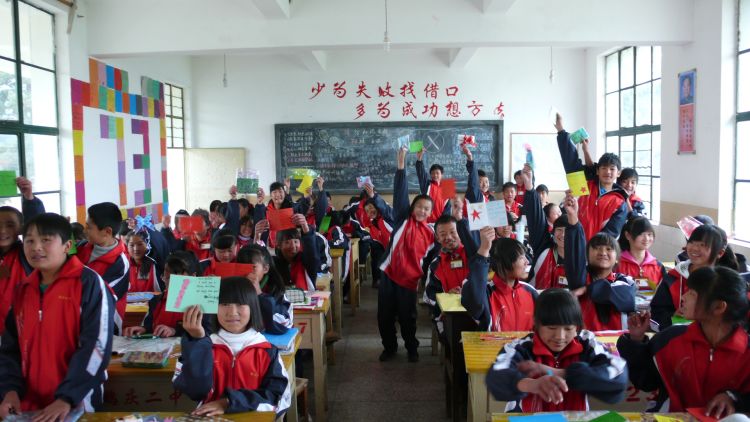
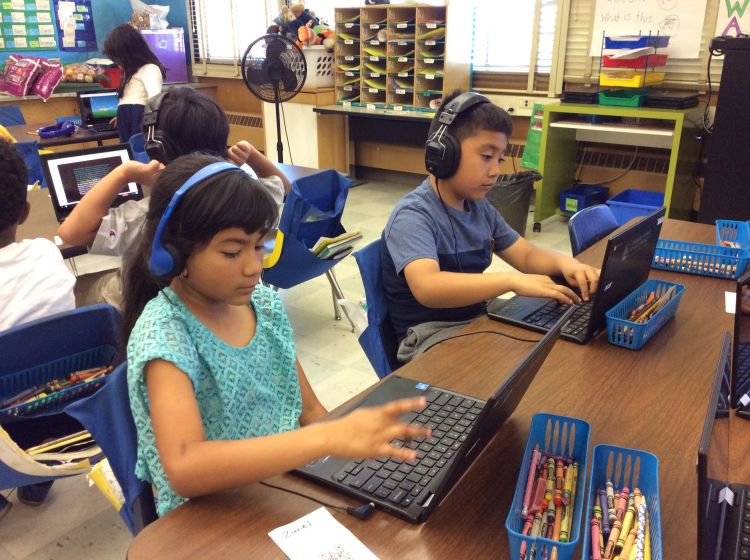
More universality
More transparency
More engagement
How to educate the public about Science?
How to connect the scientists and the public?
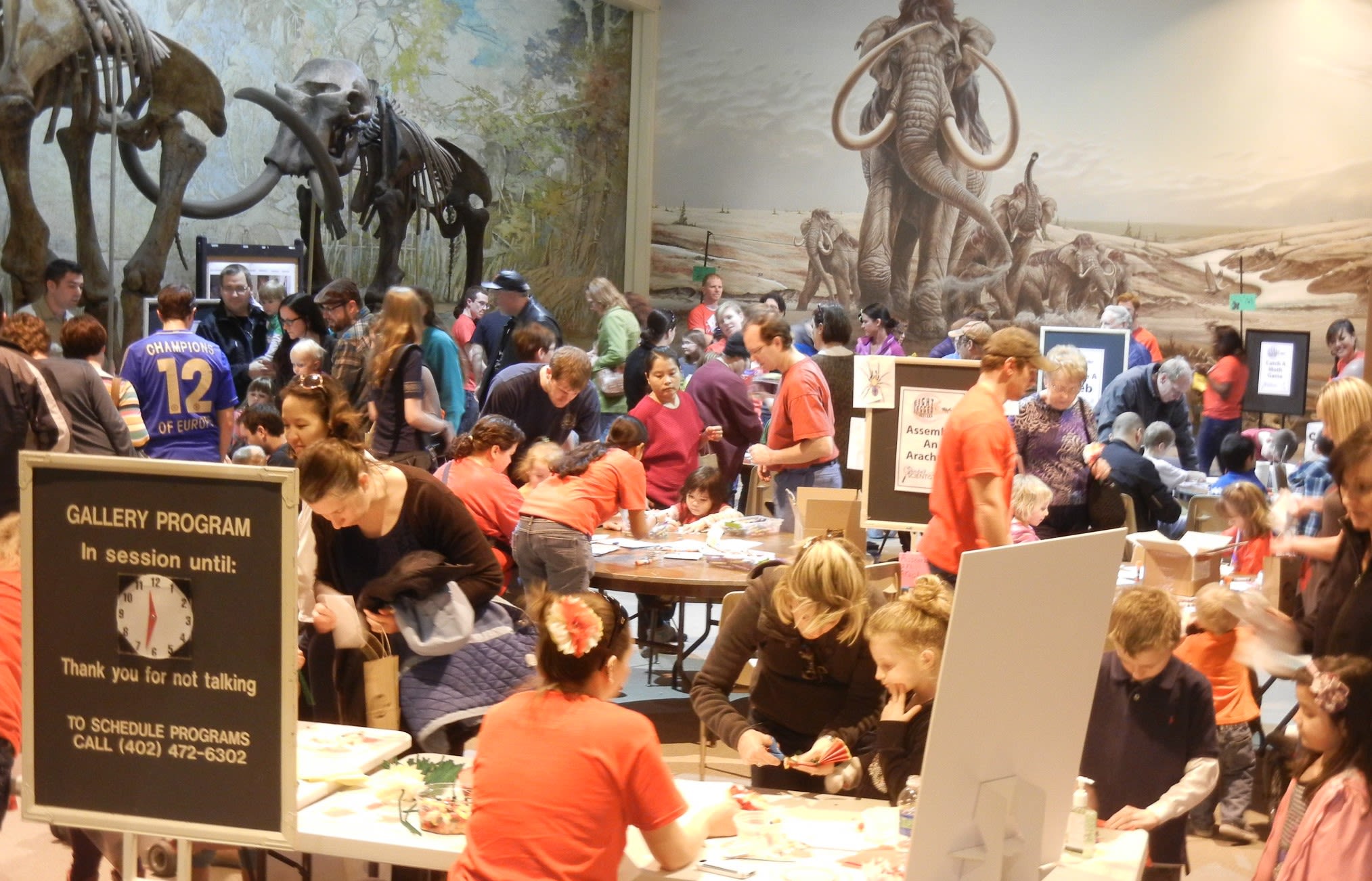
HEAR WHAT EVERYONE SAYS:
Should scientists use Instagram? Let's listen to the Clashing Voices from scientists and educators on Twitter!
“Everyone is entitled to use their social media accounts as they wish. I decided to use mine to scicomm and business networking. Nothing makes me happier than sharing my knowledge and experience with others.” - @phd_to_success
“Social media is hard to fit in to a busy schedule. No you don’t have to do it, but it’s a useful tool. It makes your science more approachable and human, leading to great #scicomm.” - @tmcelrath
“I am always telling my friends and fam the amazing new science research that is going on or a fun fact about science and I thought WHY not share to a larger audience my passion? In doing this something I never thought could happen, happened! I fell even more in love with science.” - @silli_scientist
“I am a second year neuroscience PhD student at Weill Cornell Medicine. I am trying to build a platform where I can communicate my science in a relatable and funny way to millennials using analogies, including lots of Starbucks and Tinder jokes.” - @brain_kween
“Science needs to be accessible and approachable. So here, approach me.” - @madeline.mayday
“I love sharing interesting topics in the science field with people. I enjoy breaking down a complex concept to a level where EVERYONE can enjoy it and take something away from it. I initially started my Instagram page for the following reasons. 1) I enjoyed spending time on social media and sharing pictures with my friends. 2) I have a passion for science and teaching others. 3) There is so much negativity out there on social media and I thought this was the perfect platform to share science and empower other men and women.” - @science.bae
“Why did I decide to create a scientific Instagram and become a #scientistswhoselfie? Because honestly I enjoy talking about science and wanted a platform where I could do that outside of my personal account. But also because I think that talking about being a scientist and science in general is important. Through this account I hope to shine some light on what working as a scientist is like. Maybe it will teach you a little something about the importance of estuaries, the organisms that live there, and their habitats. Or at the least show you some cool photos of life under the sea.” - @estuarine.erin
“I started this Insta as a way to promote my blog (go check out my latest post ⬆️, link in bio). I started my blog so that I could write, pretty essential if you're a wannabe medical writer. However, I've gained so much more than a bit of publicity from this. I've found new friends through @thestemsquad, and an amazing group of people who are always available to give me advice. Whether I'm stuck with a particularly difficult bit of statistics, or in a bit of a #phdslump, I know they've got my back 👊🏼.” - @surviving_science
“I #scicomm to show #ThisIsWhataScientistLooksLike. From stories of science and live experiments on stage to my work in the lab every day - I just love science!” - @paulacroxson
“I started this account to show that science is for all. With so many fake news, anti-science movements and conspiracy theories, I wanted to debunk what scientists really do, how they do it and what are the applications of our work. We do it because we love #science and we want YOU to share our passion and to participate on it.” - @thelabnotebook
“I want to bring science to communities where science isn’t readily available to help them appreciate the science in their everyday lives and help them to realize that everyone can be a part of the science community.” - @paleoparadox
“The ocean is awesome & I want to inspire the next generation to care about it & share it with the world! Plus who doesn’t want a #selfie with an #ROV?!?” - @jules02543
“For me, science communication on Instagram is one of the most effective and engaging social media platforms there is. Even for those just starting out, it gives every scientist a place to shine and inspire others. I've been able to visually share my love and passion for the Earth Sciences and in doing so, rediscovered my interest in fields far outside of my research from others in the awesome @thescicommunity.” - @volcano_grad
“Recently, I have been using Instagram to reach out to the public and other scientists. I have pictures of food, outdoors, and of course my dog Danny. I do think that scientists should take advantage of social media to communicate science. It should also be a platform to support each other, especially as female scientists.” - @dais.rosas
“I run this #cpelvcu insta. #WhyIScicomm? Because I know I work in a cool system, the work we do matters for ecology and conservation, and photos can be shared with and understood by EVERYONE regardless of whether they’ve never read a scientific journal or they work for the NSF.” - @cpelvcu
“The whole reason I started this account was to connect with women in science and hopefully carve out a space in the community for me to share my experiences.” - @scientificfeminist
“I love science. I think science should be for everyone to do, see, share in and enjoy! I've always been interested and inspired by setting everyone's posts here on Instagram, and I love taking my own pictures, making my own posts and joining in in my own little way.” - @friendly_bacteria
“I love what I do and I love to see what all the other science loving people do and post and talk about. And I see some kind of educating potential in it. But mostly, for me it's going through the stuff, learning while writing texts, breaking it down and preparing info, searching for the right terms, improving my English and thinking about my science. This is what makes me happy and I hope I can show you why. I try to share my passion and curiosity and I see passion and curiosity in all the other posts.” - @iamphaged
“I share my science because I’m passionate about wildlife and because I really enjoy the kind community here on Instagram. I also share science because it makes me happy and it’s part of who I am as a person.” - @biologistimogene
“Surely communicating findings is as important as the research itself? Plenty of people outside the science community want to hear about all the cool shit we discover, making science inaccessible and exclusive to academics would be a step backwards. We’re only just starting to shed that initial reputation, let’s keep working towards getting eeeeveryone excited about (and involved in) science. Social media and scicomms are an integral part of that.” - @sci.senora
“I take selfies in the lab pretty exclusively to send to my parents (by request) because they have no frame of reference to understand my work/school life. When they hear “scientist” they think Doc Brown or Bill Nye, like I know many other people do.” - @kylieeemac
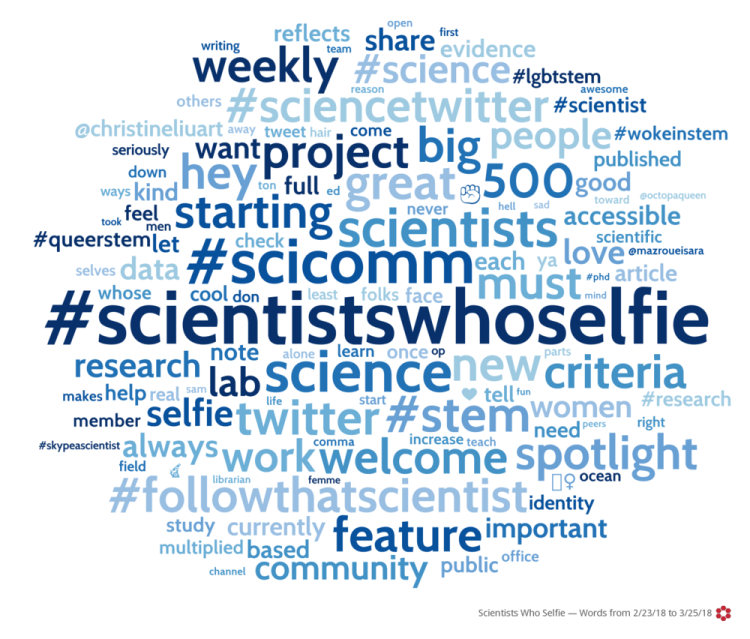
OPINION: When it comes to Public Science Education, what are we talking about?
By Alex Chen
"We need science education to produce scientists, but we need it equally to create literacy in the public. Literacy in science will enrich a person's life."
How serious is the Science-to-Public Gap?
Although the academic science community is advancing very fast, owing to the lack of sufficient science education, a large number of adults fail to take a scientific approach to solving problems or making evidence-based judgments. Instead, they readily accept the simplistic answers espoused by talk-show hosts or politicians. It is astonishing that many college-educated adults in U.S. see no differences between scientific and nonscientific explanations of natural phenomenon such as evolution or the shape of the earth.
From climate change to vaccinations, to the moon landing, all manner of scientific knowledge is facing furious oppositions. The data below explicitly demonstrates the wide gap between scientist community and the public.
Then why many people do not believe science?
This question is complicated. There are two major reasons.
When we make decisions, our personal experience, intuitions and anecdotes seem to be more convincing than statistics. An example is that we assume pollution caused the cancer when we hear about some cancer cases in a town with a hazardous waste dump. We tend to look for and only see the evidence that confirm our beliefs, which is called "confirmation bias". The Internet has democratized information, which makes us easier than ever to find the information and experts that suit our belief. Gone are the days when several powerful institutions could serve as scientific information, which caused floods of fake science news circulating on the Internet. The huge attention given to the naysayers, professional controversialists, and table thumpers on the media contributes to the problem. It is possible that you live in a "filter bubble" that lets in the information that you agree with. Additionally, some people cannot accept scientific facts not because they do not grasp the essence but because they are only to use scientific knowledge to reinforce beliefs shaped by their worldview including the political spectrum and religion.
“We’re all in high school. We’ve never left high school. People still have a need to fit in, and that need to fit in is so strong that local values and local opinions are always trumping science. And they will continue to trump science, especially when there is no clear downside to ignoring science.”
Another reason is the distance between academic science community and the public. The public have few opportunities to get involved in the course of how scientists are doing experiments, how they evaluate their discoveries, how papers are reviewed by peers and how the results are published. Mostly the public recognize the achievements of scientists, but they choose to believe their own experience when the scientific claims contradict their belief because they are unfamiliar with science community.
It should be noticed that the ultimate goal of science education for the public is to "create a society where well-educated adults are equipped to bring scientific thinking to bear on issues that affect them as citizen" (Elizabeth Marincola, 2006). To realize the goal, we need the efforts from the public and the science community to bridge the gap.
How should we educate the public about science?
Generally, we promote the public engagement in science, in which scientists play a critical role. Scientists must not shy from communicating with the public, because they are under the obligation to speak up why science is central to our everyday life, and clarify with journalists and provide evidence on the most polarizing science-based topics. Scientists are supposed to keep a smooth communication with the media, which is helpful for providing a vehicle for translating the nature and implications of their work. When science facts contradict people's personal, religious or political opinions, there need to be a genuine, respectful and trans-positional dialogue, not a lecture. We should encourage scientists use all kinds of methods to spread science spirits, participate in science-related activities to strengthen the public's perceptions of scientists' expertise and trustworthiness.
Making a good use of the social media like Instagram, blogs or Twitter to share science is a new method to communicate science online broadly. An increasing number of scientists are using Instagram to show what scientists actually do every day, to share science knowledge or the exciting moments of experiments. Then why they are doing this? In an interview, a scientist said, "What drives us are motivations to engage the public, make research more accessible, build a community around ourselves, practice our communication skills, send photos to our friends and family, show how scientific knowledge is actually created, and express our passions creatively. If we change public perceptions or stereotypes about who is or can be a scientist, by being ourselves online, that’s bonus." We need to appreciate them because they make science and scientists touchable in an average person's life.
The communication of science community and the public actually lies in the hands of teachers and journalists. Students in schools are potential future scientists and will constitute the future society. Journalists help convey the science spirits and reach millions of audience in a exciting and entertaining whilst scientifically sound and balanced way. But how to establish the connection with schools and media? SciComm, which is a conference "dedicated to understanding and promoting effective communication of science to diverse audiences – including students of all levels as well as the general public – across all venues.", is a precious opportunity to connect scientists, teachers and media. Let us see the missions of the program:
- " Train scientists, educators, journalists and the public in effective science communication
- Disseminate cutting-edge research, tools, evaluation instruments, programs, and activities for science learning and evaluation inside and outside of classrooms.
- Forge new connections between university instructors, discipline-based education researchers, K-12 teachers, informal and formal science learning sites (e.g. museums, libraries), science learning researchers and evaluators, and science disseminators (e.g. science writers, film makers, etc.).
- Engage with the public, policy makers, and people who use science communication in a diversity of careers.
- Provide opportunities for practitioners of science communication to implement communication strategies and receive critical feedback."
But only SciComm is not enough. To make science really blend in the public's everyday life, we have a long way to go.
Bibliography:
- " Why is public science education important?" By Elizabeth Marincola Published on J Transl Med. 2006; 4: 7.
- " Why Do Many Reasonable People Doubt Science?" By Joel Achenbach
- " Communicating basic science: what goes wrong, why we must do it, and how we can do it better?" By Andreas Prokop
- " Bridging the opinion gap" By Alan I. Leshner, Published on Science 30 Jan 2015, Vol. 347
- " Let’s talk about #SciComm" by Jack Leeming
- nescicomm.com
